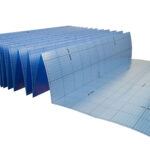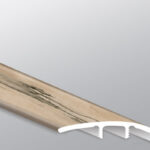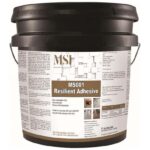What is Laminate Flooring?
Laminate flooring offers a low-cost alternative to wood or stone flooring, presenting many attractive styles. This synthetic floor, which debuted in the 1970s, is known for its realistic wood and stone looks. Due to its low maintenance and durability, laminate remains a top choice for various settings.
Why Use Laminate Flooring?
Pros:
– Durable and suitable for high-traffic areas.
– More scratch-resistant than vinyl.
– Authentic wood and stone appearance.
– Some water resistance with advanced construction.
– Compatible with radiant heating systems.
– Easy maintenance.
– Convenient installation.
– Comfortable underfoot.
– Cost-effective.
Cons:
– Not as water-resistant as vinyl flooring.
– Not advised for bathrooms or basements.
– Can produce hollow sounds if installed poorly.
Where to Use Laminate Flooring?
Laminate flooring suits residences, businesses, and offices due to its durability. Its Abrasion Class (AC) rating indicates its suitability, with higher ratings being apt for commercial settings.
Laminate Flooring Construction
Like a sandwich, laminate consists of several layers:
1. Backing: Provides stability and prevents water penetration.
2. Core Layer: Composed of high-density fiberboard, providing durability.
3. Image Layer: Displays the pattern or print, offering the wood or stone look.
4. Wear Layer: Protects the floor from wear and tear.
Laminate Flooring Thickness
While laminate thickness ranges from 6mm to 13.5mm, thickness isn’t the only determinant of durability.
AC Rating
The AC rating represents the floor’s ability to handle traffic:
– AC1: Low traffic residential areas.
– AC2: Medium traffic residential areas.
– AC3: High traffic residential areas.
– AC4: Residential and some commercial areas.
– AC5: High-traffic commercial areas.
Laminate Flooring Health & Safety
Concerns have arisen regarding formaldehyde emissions from some laminate products. However, many brands comply with the California Air Resources Board’s CARB2 standard, ensuring safety.
Laminate Flooring Looks
Laminate primarily replicates the wood look but has expanded its designs with technological advancements. This includes styles like reclaimed, weathered, distressed, rustic, and hand-scraped looks.
Laminate flooring offers the beauty of traditional wood or stone without the high costs. Its durability, cost-effectiveness, and range of styles make it a preferred choice for many. However, potential buyers should be aware of its water resistance limits and ensure their choice meets safety standards.
Laminate Flooring Colors
– Trendy extreme light and dark colors, including beachy whitewashed and nearly black espresso hues, have been in vogue.
– Middle-of-the-road colors are gaining popularity.
– Gray laminate is a favorite for both homes and businesses and will remain trendy for the foreseeable future.
Featured Colors:
1. Gray Laminate: Offers a modern, cool ambiance and serves as a neutral background for most decor colors.
2. Espresso Laminate: Stylish and makes a statement. Deep and rich in color, but can make rooms appear smaller and show dirt/scratches easily.
How to Install Laminate Flooring
– One of the advantages of laminate flooring is the DIY-friendly installation.
– Most laminate is installed as a “floating floor”, no adhesive required.
– For commercial or high-traffic areas, gluing the planks is recommended.
– Underlayment is crucial for stability and longevity.
– In moisture-prone areas like basements, kitchens, and bathrooms, a vapor barrier is recommended.
How to Clean Laminate Flooring
– Important to clean spills immediately to prevent damage.
– Avoid using liquids as laminate is sensitive to moisture.
– Recommendations for cleaning:
– Clean spills immediately.
– Sweep or vacuum regularly.
– Use a damp cloth for spills.
– Use products specifically for laminate flooring.
– Avoid water, oil-soap detergents, steel wool, and strong chemicals.
Choosing Your Laminate Floor
– Laminate flooring is cost-effective, durable, and great for busy households.
– When selecting laminate flooring, consider water resistance, AC rating, and design preferences.
Tip: Order free samples to get a real feel of the product before purchase.




